Tear break-up test
13/01/2026
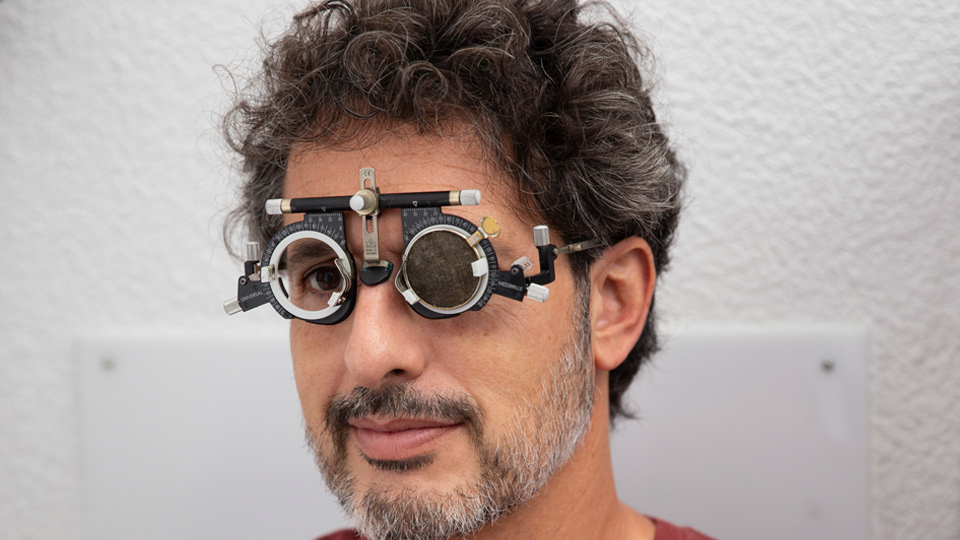
16/01/2026
Refractive errors are common eye conditions that affect the eye’s ability to focus light correctly, which can result in blurred or distorted vision. We will explore each of these errors, how they affect vision and how they can be corrected.
It is important to clarify a common confusion between two related but different terms: visual acuity and spectacle prescription (optical correction).
Visual acuity is a measure of the ability to distinguish between two separate points at a given distance. There are several scales, and it is commonly (but incorrectly) referred to as a percentage of vision, because in our setting a scale between 0 and 1 is used. It is measured with and without glasses, but the most useful measurement is with the best possible correction, as this gives an indication of how well the eye is functioning.
The prescription is the measurement of the eye’s optical “defects”, expressed as a formula from which glasses are made. It has the following form: 90° (axis of astigmatism) −1.25 (astigmatic power) +2.00 (spherical error, in this case hypermetropia). It can be written in different ways; the astigmatism axis can be given in positive or negative form, but myopia is always expressed with a negative sign, while hypermetropia and presbyopia are expressed with a positive sign.
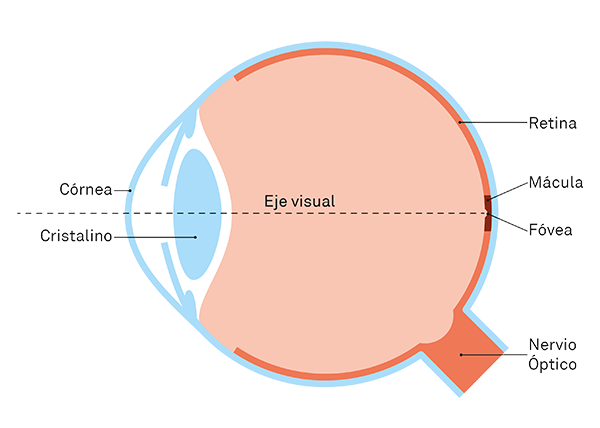
With regard to lenses, the most important are the cornea and the crystalline lens. The tear film, aqueous humour and vitreous body also have an influence, but for practical purposes this is minimal.
If the eye is longer than normal, or if the lenses are too powerful in relation to the eye’s length, the image is focused in front of the retina. This is known as myopia.
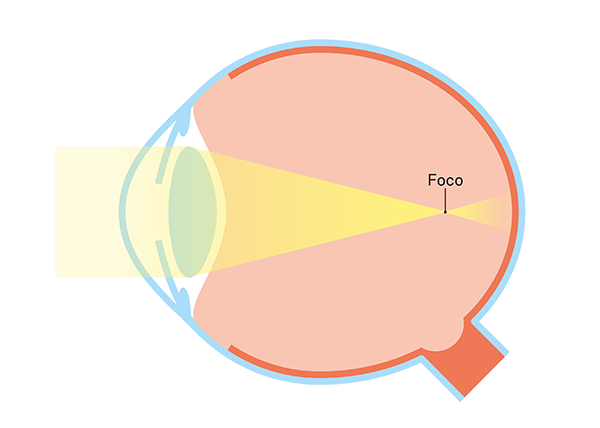
To correct the focus, a diverging lens is used, which reduces the overall optical power. For this reason, by convention, myopia is expressed with a negative sign.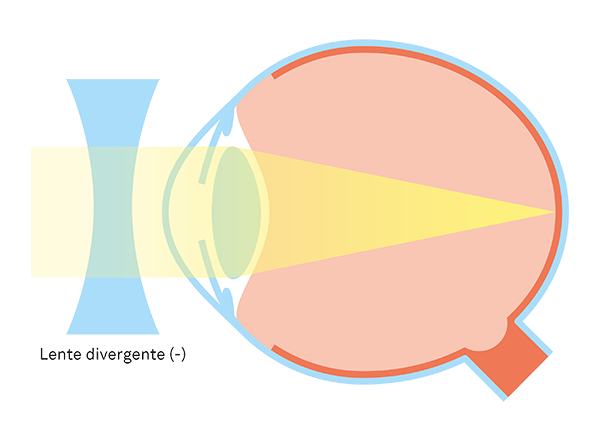
In the opposite case, if the image is (theoretically) focused behind the retina because the eye is shorter or the lenses have insufficient power, this is referred to as hypermetropia.
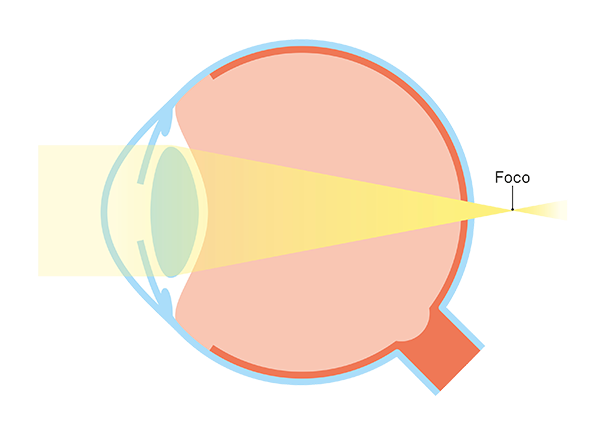
To compensate for hypermetropia, converging lenses are used, which add power to the optical system.
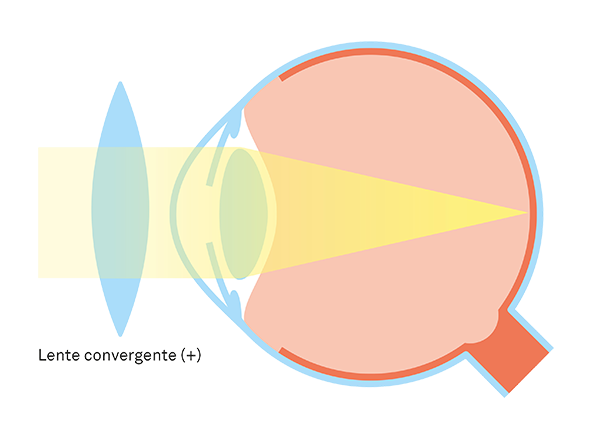
It is important to bear in mind that we are not taking the process of accommodation into account here. We are considering light coming from beyond one or two metres, which for the eye is equivalent to infinity under normal conditions. Sometimes the eye accommodates when it should not, resulting in latent hypermetropia or “false” myopia. This can mainly cause headaches due to visual effort and can only be diagnosed by an ophthalmologist, as it requires a test performed under the effect of drops known as cycloplegia.
From birth, we begin to lose accommodative ability. However, it is from around 40–45 years of age that this becomes noticeable, as the capacity for accommodation and the visual demand become equal at this stage of life. This condition is known as presbyopia or age-related long-sightedness. In practical terms, it is defined by the need to change prescription between near and distance vision. It behaves like hypermetropia, which is why the corrective lens is also converging (positive).
Astigmatism is somewhat more complex, as the eye must be considered a three-dimensional structure rather than a flat lens. It essentially occurs when light rays are refracted differently depending on the point at which they enter the eye.
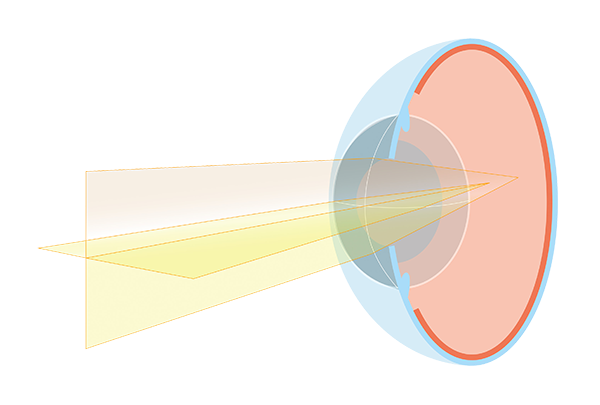
This happens because the eye is not a perfect sphere, and when it is “sufficiently flattened”, the visual system behaves like a toroid. If we cut a section from the edge of a toroid or “doughnut” and use it as a lens, we can see that it does not refract light equally at all points. It is more powerful along one axis and progressively less so as we rotate 90 degrees, perpendicular to the original axis.
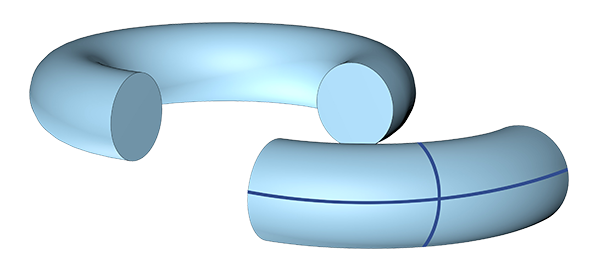
For this reason, the prescription formula includes the astigmatism axis: it indicates the power that must be applied at each point of the lens to compensate for the deviation. Either a positive or negative sign can be used; what matters is specifying the axis being referred to.
In conclusion, refractive errors such as myopia, hypermetropia, astigmatism and presbyopia are common conditions that affect the eye’s ability to focus light correctly. Fortunately, these refractive errors can generally be corrected using lenses, such as glasses or contact lenses, which compensate for the eye’s optical irregularities and improve visual quality. It is important to have regular eye examinations with an ophthalmologist to detect and correct any pathology or refractive error and to ensure optimal vision at all distances.
Dr. Alberto Lozano, Ophthalmologist at the Barraquer Ophthalmology Centre
Almost all wearers of glasses and contact lenses consider reducing their prescription with refractive techniques at some point. In this chapter we explain all the options and help you know when it is worth having surgery, who is a good candidate and why it is so important to choose where to go.